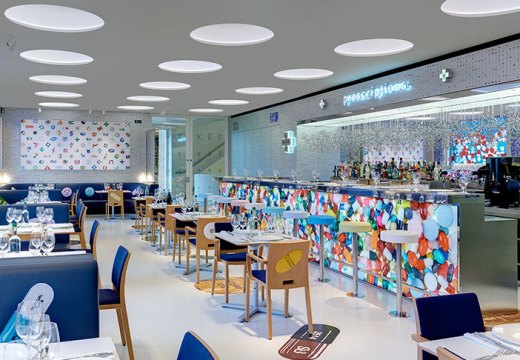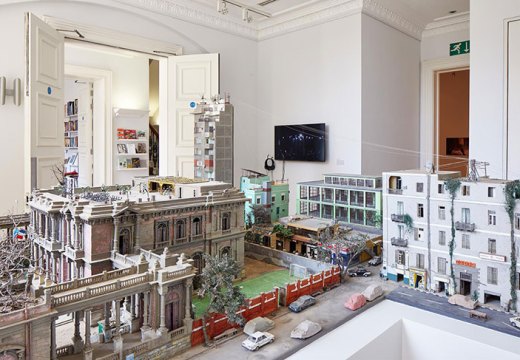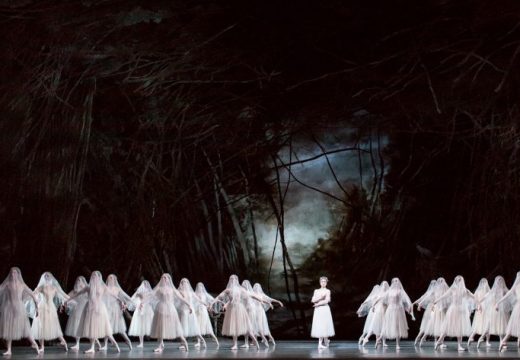38 | Director and Chief Curator, David Roberts Art Foundation (DRAF), London, UK
Your undergraduate degree was in mathematics. Presumably you weren’t thinking about becoming a curator then?
The word ‘curator’ didn’t exist in Turkish then! Joking aside, I wasn’t thinking about it. I wanted to become a mathematician when I was in high school, and I went to maths olympiads and chess competitions and all that. I was quite a nerdy student, and my dream was to solve Fermat’s Last Theorem.
So how did you make the move into curatorial work?
I feel like it was basically a quest – and something intuitive. When I started college, I had time on my hands to go and explore. I was exploring who I am, what I feel, what I think, and how I relate to the world around me. And I realised that art had the possibility of providing many viewpoints.
At that time, I became interested in photography, and I started painting horrible paintings (I also liked mountaineering and extreme sports). I joined a photography club and wrote for its new magazine, which was eventually distributed nationwide to 3,000–4,000 readers. I basically started to evolve into being a curator without knowing that I was going to become one, by following my curiosity. While I was finishing my degree – it took eight years – I worked for a cultural institution, and for a commercial gallery for a year and a half, which made me decide that wasn’t for me. And then I started an artist-run initiative with two colleagues, before I graduated and left Turkey.
Do you have set priorities as a curator?
I do, I think. First and foremost, my priority is the artwork. That ripples out to caring for the artists and their needs, whether financial assistance or emotional or intellectual support, or just encouraging them to take more risks in their practices. Secondly, I’m a conceptually oriented curator. I’m interested in ideas and concepts – not necessarily illustrating them through my curatorial work, but exploring them.
You spent several years working as an independent curator. How challenging is it to work in that capacity?
To be an independent curator was my choice, because I needed to find my voice. l was driven to this field without knowing how or why, and to find that out I had to be able to initiate my own projects. That was one of the reasons I left Turkey: to see if I had it in me.
Being an independent curator isn’t always easy, partly because when you introduce yourself to people they often think that you’re undercover-unemployed. But for me it was really a choice. I didn’t want stick to one thing: I could be very curious about architecture, and challenge myself to study it – then get a commission to write a book on it, which would give me a new arena.
What helped me to survive was having a network in Europe, which kept me travelling to give lectures, for residencies, or to curate shows or mini video festivals. My first international projects were always about what was happening in Turkey, but I didn’t want to be seen as a ‘Turkish’ curator. I had to be independent to say, hey, I’m interested in science and quantum physics and mathematical concepts that might expand our perception of art.
You joined DRAF as director earlier this year. How do you see the programme developing?
Our ethos for the next phase of DRAF is that the future is collaborative. That’s about sharing excitement, passion, desire for art – and fostering communication. It’s important that we all start becoming more porous entities as institutions, and as individuals.
We’re looking for a space for DRAF in London that will be a venue for lots of workshops, peer-to-peer workshops – artist to artist, curator to curator, and also for the public – for screenings, for the showing of artworks, for symposia. It’s going to be very discursive.
I also think we need a slow art movement, to slow down how we engage with the arts, and especially with big commissions that have had long production processes. If we show a work in London, then we need to collaborate with partners who will show it somewhere else in the country. Every exhibition is a recontextualisation of an artwork, and it’s really important to multiply those contexts so the work can grow and breathe.
Do private foundations need to work more closely with public institutions?
I think so – not glorifying one or the other, but actually joining forces to make something meaningful together. Public funding is decreasing, and it’s becoming more dependent on audience figures and the levels of efficiency of institutions. That has an impact on institutional programming, as it means that public institutions need to bring in big names or put on blockbuster shows.
Private funding doesn’t always need those numbers; the donors can just believe in the vision. My last big project, fig-2, had huge philanthropic support; Art Night, which I curated in 2017, is more than 90 per cent privately funded. You can make really bold, large-scale commissions without necessarily justifying the need for them or promising the size of the audience that will turn up.
What advice would you give to someone setting out as a curator?
To take risks and follow your inner voice as much as you can. It’s really important not to do things because you think they’re going to be fashionable or popular. Thereʼs a lot of populism in curating today that evolves from things like the top 100 selling artists. Don’t be strategic. Just follow where you’re guided to go.
See more 40 Under 40 Europe Thinkers
Unlimited access from just $16 every 3 months
Subscribe to get unlimited and exclusive access to the top art stories, interviews and exhibition reviews.








